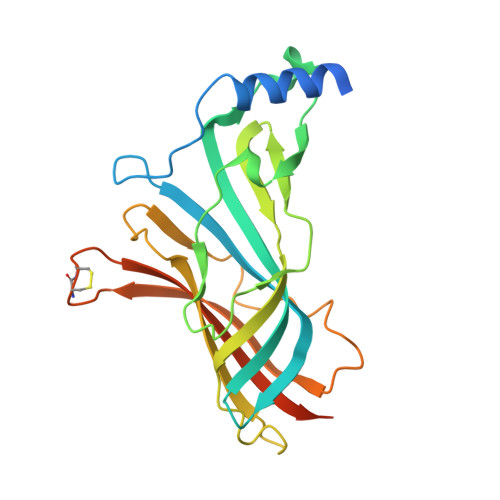Palonosetron-5-HT3 Receptor Interactions As Shown by a Binding Protein Cocrystal Structure.
Price, K.L., Lillestol, R.K., Ulens, C., Lummis, S.C.(2016) ACS Chem Neurosci 7: 1641-1646
- PubMed: 27656911
- DOI: https://doi.org/10.1021/acschemneuro.6b00132
- Primary Citation of Related Structures:
5LXB - PubMed Abstract:
Palonosetron is a potent 5-HT 3 receptor antagonist and an effective therapeutic agent against emesis. Here we identify the molecular determinants of compound recognition in the receptor binding site by obtaining a high resolution structure of palonosetron bound to an engineered acetylcholine binding protein that mimics the 5-HT 3 receptor binding site, termed 5-HTBP, and by examining the potency of palonosetron in a range of 5-HT 3 receptors with mutated binding site residues. The structural data indicate that palonosetron forms a tight and effective wedge in the binding pocket, made possible by its rigid tricyclic ring structure and its interactions with binding site residues; it adopts a binding pose that is distinct from the related antiemetics granisetron and tropisetron. The functional data show many residues previously shown to interact with agonists and antagonists in the binding site are important for palonosetron binding, and indicate those of particular importance are W183 (a cation-π interaction and a hydrogen bond) and Y153 (a hydrogen bond). This information, and the availability of the structure of palonosetron bound to 5-HTBP, should aid the development of novel and more efficacious drugs that act via 5-HT 3 receptors.
Organizational Affiliation:
Department of Biochemistry, University of Cambridge , Tennis Court Road, Cambridge CB2 1QW, United Kingdom.
















